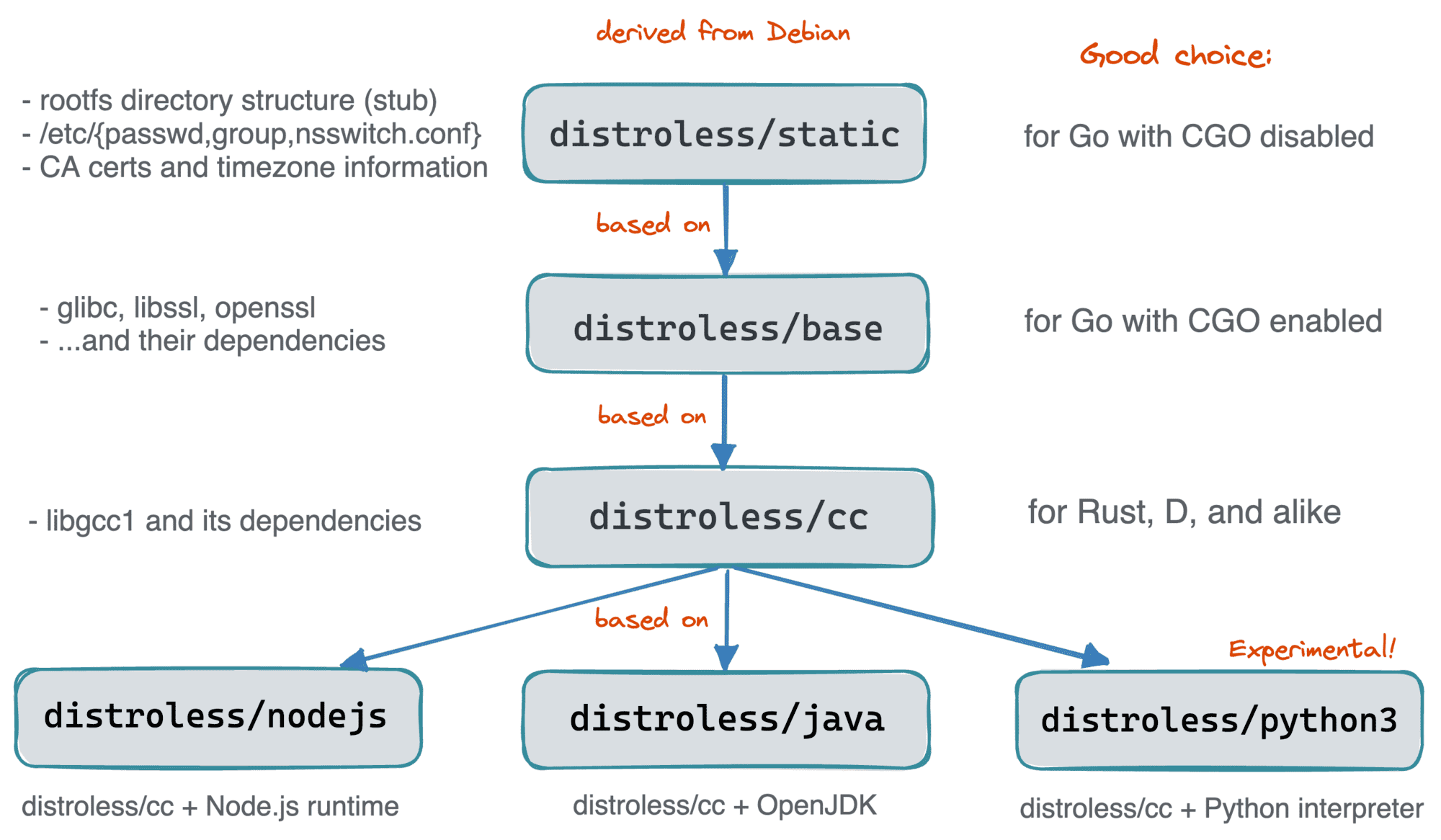Distroless
GoogleContainerTools’ distroless base images are often mentioned as one of the ways to produce small(er), fast(er), secure(r) container.
Note
The idea behind the GoogleContainerTools/distroless project is pretty simple - make a bunch of minimal viable base mages (keeping them as close to scratch as possible) and automate the creation procedure.
Pitfalls of scratch containers
- Scratch containers miss proper user management
- Scratch containers miss important folders (
/tmp,/home,/var) - Scratch containers miss CA certificates
- Scratch containers miss timezone info
While technically scratch base images remain a valid option to produce slim containers, in reality, using them for production workloads would likely impose significant operational overhead.
Distroless/static
A good starting point to become familiar with the project’s offering is the distroless/static base image:
docker pull gcr.io/distroless/static
dive gcr.io/distroless/staticThe dive output tells us:
- The image is Debian-based
- It’s just around 2 MB big and has a single layer (which is just great).
- There is a Linux distro-like directory structure inside.
- The
/etc/passwd,/etc/group, and even/etc/nsswitch.conffiles are present. - Certificates and the timezone db seem to be in place as well.
Not every program is statically linked
A nice by-product of experimenting with “from scratch” containers is that it allows you to learn what is actually needed for a program to run. For a statically linked executable, it seems to be just a bunch of config files and a proper rootfs directory structure. But what would it take for a dynamically linked one?
Distroless/base
The distroless/static image sounds like a perfect choice for a base image if your program is a statically linked Go binary.
But what if you absolutely have to use CGO and the libraries you depend on can’t be statically linked (I’m looking at your, glibc)?
Or you write things in Rust, or C, or any other compiled language with less perfect support of static builds than in Go?
What the dive output tells us:
docker pull gcr.io/distroless/base
dive gcr.io/distroless/base- It’s 10 times bigger than distroless/static (but still just around 20 MB).
- It has two layers (and the first layer IS distroless/static).
- The second layer brings tons of shared libraries - most notably
libcandopenssl.
Distroless/cc
For some reason, Rust has a runtime dependency on libgcc, and it’s not present in the distroless/base.
docker pull gcr.io/distroless/cc
dive gcr.io/distroless/ccThe dive output tells us that:
- It’s a three-layered image (based on distroless/base),
- The new layer is just about 2 MB big.
- The new layer contains
libstdc++, a bunch of static assets, and even some Python scripts (but no Python itself)!
At A Glance
